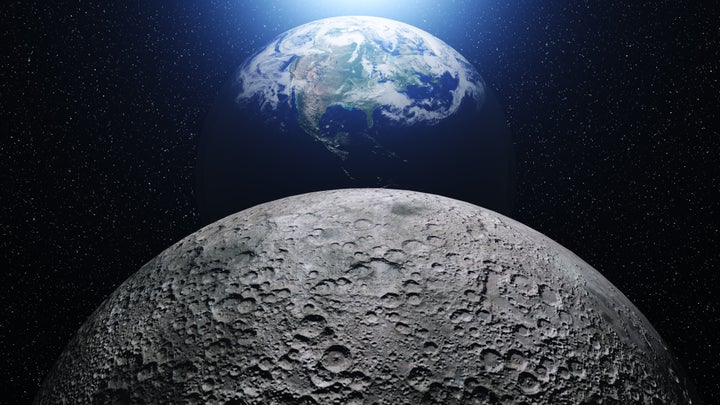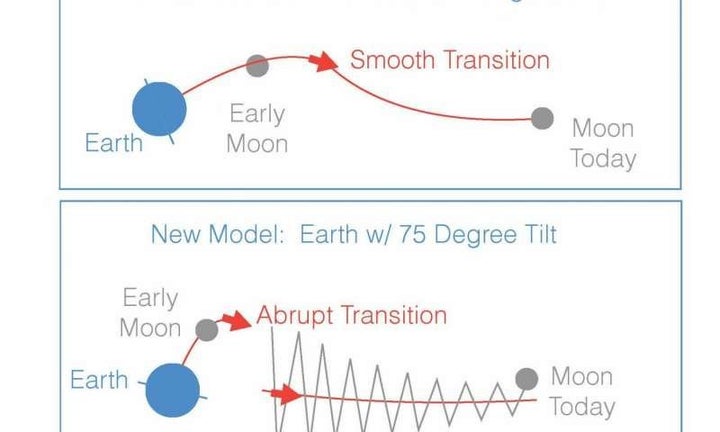How did the Moon form? It’s a question which has perplexed astronomers for centuries. Now, a team of researchers in America have a new theory with a couple of key twists on the conventional explanation.
The textbook theory is that the moon formed “when a Mars-sized object grazed what would become Earth, throwing off a mass of material from which the Moon condensed”, a spokesperson for the new study explained.
Over many thousands of years, the moon moved away from Earth and the rotation slowed down to our current 24-hour day, according to existing analyses of the tidal forces between the two objects.
But this theory doesn’t explain why the Moon’s composition is so similar to Earth’s. They are the only two bodies in the solar system with such similar chemistry. Nor does it explain why, if the Moon condensed from material around the Earth’s equator, it doesn’t orbit directly above it. It’s five degrees off.
Scientists think this means more energy must have altered the Moon’s position.

In 2012, researchers proposed that “some of the angular momentum of the Earth-Moon system could have been transferred to the Earth-Sun system”, a spokesperson explained. This means the collision could’ve been more energetic.
In the new model, outlined in a study in Nature, the collision was so hard that the material from Earth and the impactor mixed together, and the two bodies condensed from the same material.
The spokesperson explained that the momentum of the impact “dissipated through tidal forces” and the Moon moved out to a point where “the forces from the Earth on the Moon became less important than gravitational forces from the Sun”.
The spokesperson added: “This caused some of the angular momentum of the Earth-Moon system to transfer to the Earth-Sun system.
This made no major difference to the Earth’s orbit around the Sun, but it did flip Earth upright. At this point, the models built by the team show the Moon orbiting Earth at a high angle, or inclination, to the equator.”
This abrupt transition can be see in the lower panel:

Over a few tens of millions of year, the Moon moved further away from the Earth, eventually dropping its position to about five degrees, its current orbit.
Sarah Stewart, senior author and professor of earth and planetary sciences at the University of California, Davis said the theory explains the Moon’s orbit based on a single collision: “One giant impact sets off the sequence of events.”
